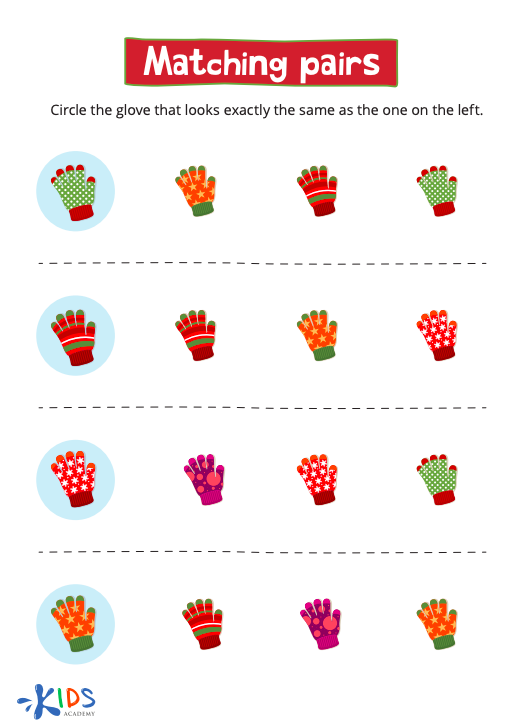-
English
-
English Pre-K
-
Unit 1: Early Literacy Skills
-
ABCs
- Pre-writing Activities
- Letter A
- Letter B
- Letter C
- Letter D
- Letter E
- Letter F
- Letter G
- Letter H
- Letter I
- Letter J
- Letter K
- Letter L
- Letter M
- Letter N
- Letter O
- Letter P
- Letter Q
- Letter R
- Letter S
- Letter T
- Letter U
- Letter V
- Letter W
- Letter X
- Letter Y
- Letter Z
-
Phonological Awareness
- Rhyming Words
- Letter Sounds B, C, D, and F
- Letter Sounds G, H, J, and K
- Letter Sounds L, M, N, and P
- Letter Sounds Q, R, S, and T
- Letter Sounds V, W, X, Y, and Z
- Letter Sounds A, E, and I
- Letter Sounds O and U
- Beginning Sounds
- Matching Letters to Sounds
-
ABCs
-
Unit 2: Vocabulary
-
Common Words
- Sorting Words into Categories
- Color Words
- Verbs and Adjectives
-
Sight Words
- Sight Words 'I' and 'Can'
- Sight Words 'You' and 'Like'
-
Common Words
-
Unit 3: Print Awareness
-
Parts of a Book
- Working with a Book
- Spaces Between Words
- Text and Illustrations
-
Picture Books and Poems
- Picture Book Text Features
- Poem Text Features
- Signs and Labels in the Community
-
Parts of a Book
-
Unit 4: Reading Literature
- Questions About Stories
- Discussing Stories
-
Unit 5: Reading Informational Texts
- Retelling Details in a Text
- Questions About a Text
- Connections Between Events
- Text Features
- Describing Illustrations
-
Unit 1: Early Literacy Skills
-
English Pre-K
-
Math
-
Math for Pre-Kindergarten
-
Logic and Geometry
-
Matching and Sorting
- Same and Different
- Which One Is a Little Different?
- Objects That Go Together
- Sorting by Color and Size
- Sorting The Same Group in Different Ways
- Patterns
-
Shapes
- Shapes in Our Environment
- Naming Shapes Regardless of Size
- Making Shapes in Preschool
- Comparing Shapes
- Relative Positions
- Sorting Shapes
-
Matching and Sorting
-
Early Number Sense
-
Numbers 1–5
- Counting to 3
- Counting to 5
- Arranging Objects up to 3 Objects
- Arranging up to 5 Objects
- Writing Numbers 1–5
-
Numbers 1–5
-
Numbers up to 10
- Counting to 10
- Arranging up to 10 Objects
- Number 0
- Writing Numbers 6–10
- Breaking Down Numbers 6-10
-
Logic and Geometry
-
Math for Pre-Kindergarten
Logic and Geometry
Preschool math skills range from number sense, addition, subtraction, to geometry and logic. Children at this stage are naturally curious about the world around them and are quickly developing language skills to communicate what they are seeing. At this level, they will be able to identify and name simple shapes like square, circle, and triangle. Pointing these shapes out to your child in everyday life is a great way to encourage the discovery of geometric shapes around us. You may find that your child naturally begins to group and sort items that have similarities.
Matching and Sorting
Sorting and grouping are another set of developmental mathematical skills that are the foundation of which other math skills will be built on. At home and at school, children may sort toy cars based on size or color. In this section, you will find many activities that ask your child to compare, match and sort objects in a variety of ways.
This video is a great introduction to comparing objects using categories such as size, shape and color.
Building on the video students can practice matching up pairs of gloves!
Your child will take a trip to the garden in this fun video demonstrating sorting objects based on color and size!
In this fun Three Little Pigs themed worksheet, your child will help the pigs match their brush to the correctly colored bucket of pain.
Shapes
Children at this age will begin to recognize simple shapes and make connections between different objects that have those shapes. As they move up in grades, they will be asked to identify the attributes of each shape in order to identify them. At the pre-k level, students will earn to identify and draw shapes and to identify them regardless of color.
Anytime you can make a connection between math and the real world, deeper learning will take place. In this video, your child will identify shapes that are found in a house.
Your child will get fine motor skill practice while identifying rectangles with this fun robot activity page.
Data
In our collection of articles on data for preschoolers, you will find various activities in which your child can practice skills such as comparing weight, length, and identifying what it means to be “first” and “last.”
This fairytale themed activity will have your child comparing length and size.
Remember that your child will learn best when you encourage them to use these math skills everyday. Asking them to find shapes in their environment, compare the size of toys, and sorting blocks are great ways to practice these early math skills. Use our interactive catalogue to find more resources to help your child learn and grow!
By: Nora Brown
Elementary School Teacher





